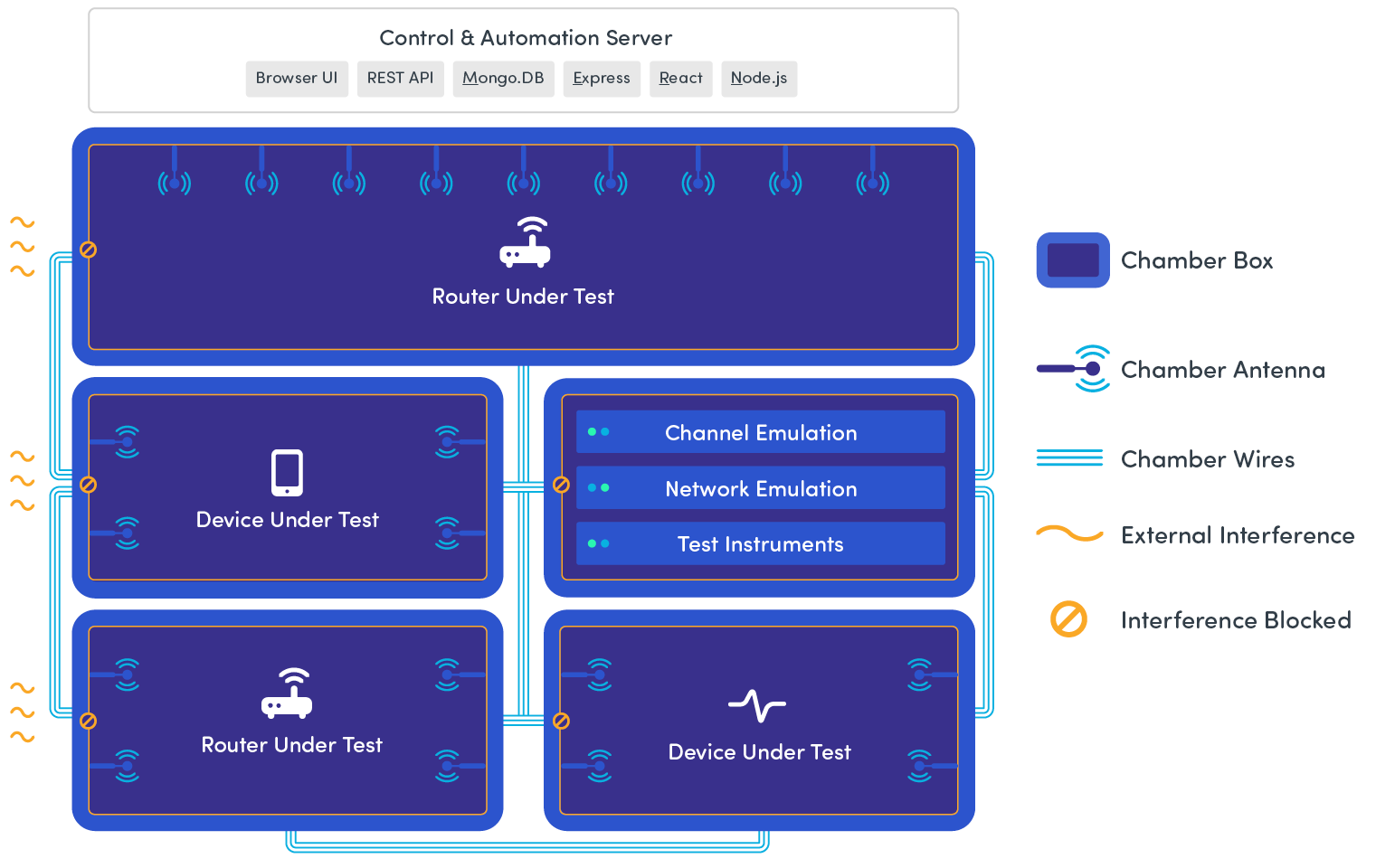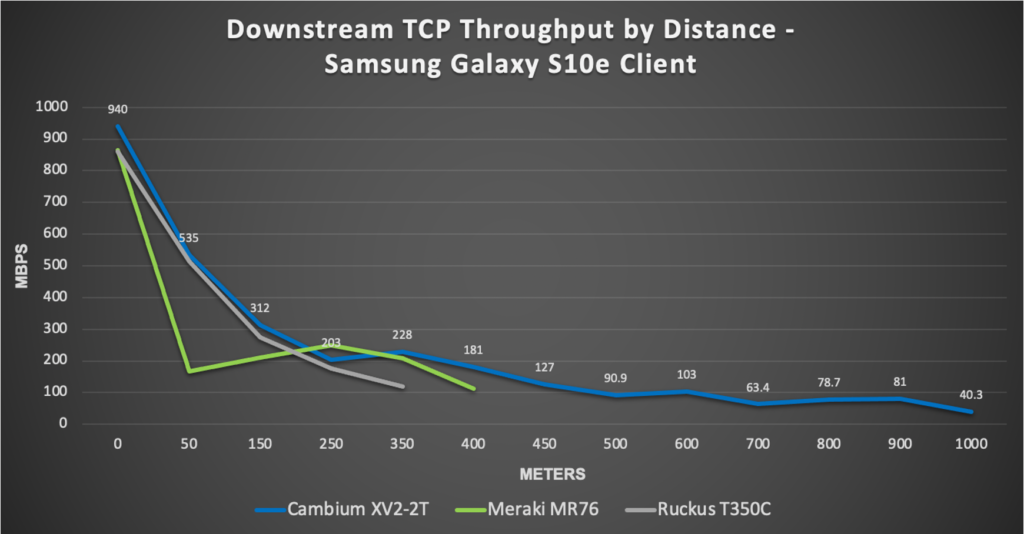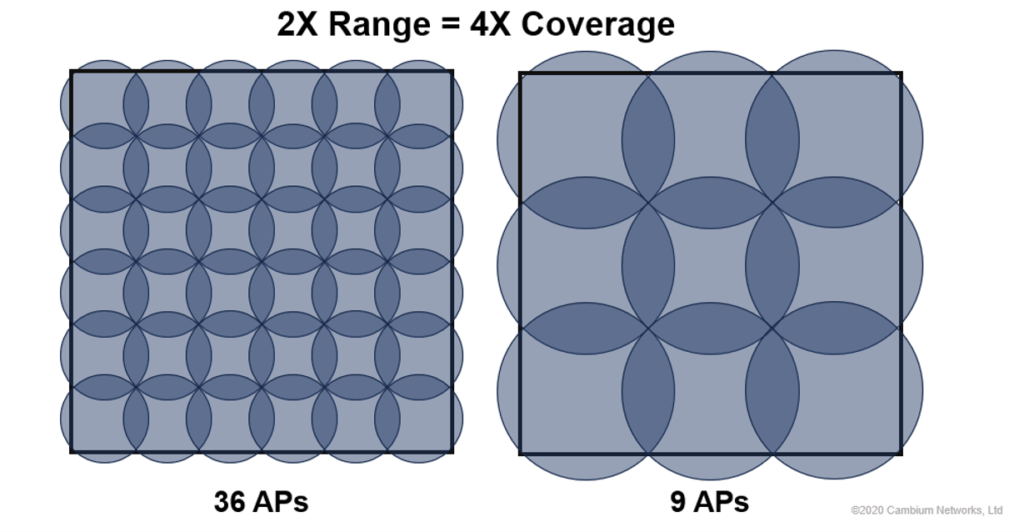Edgecore Networks, the leading provider of open network solutions for enterprises, data centers, and telecommunication service providers, Ecrio, the leading supplier of Mobile Carrier Communications and Messaging client software, and today announced that Ecrio delivers Carrier Voice (4G VoLTE, 5G VoNR and VoWiFi) and Rich Communication Services (RCS) capability integrated on the Edgecore family of OpenWiFi-ready Access Points.
The Ecrio’s FlexIMS™ Software is compliant with the 3GPP and GSMA standards. It offers secured communication and messaging to the mobile Operators across varied radio and core network configurations. It serves a variety of endpoints such as Gateways (FWA and IoT) and Devices (Smartphones, Wearables, AR/VR glasses, and Drones).
Edgecore’s Access Points, with the pre-loaded TIP OpenWiFi Image, offer a highly customizable, open platform featuring Wi-Fi 6 ultra-fast, low-latency technology suited for live audio/video streaming, conferencing, and collaboration. The EAP101 and EAP102 access points include built-in Bluetooth Low Energy (BLE) and ZigBee, enabling value-added IoT applications for Industrial and Home Automation.
“We are pleased to enter into this partnership with Edgecore, a major player for disaggregated network solutions,” said Michel Gannage, Founder and CEO of Ecrio. “We look forward to delivering our pre-certified, carrier communication and messaging solutions on Edgecore’s OpenWiFi-ready Access Points”.
“We are excited about this collaboration with Ecrio to deliver pre-integrated standards-compliant communication applications on our open access-point platform”, said Tengtai Hsu, Vice President of Edgecore Networks. “Working with Ecrio and the OpenWiFi ecosystem, we look forward to enabling innovative FWA and IoT Services serving the Wireless Operators and Internet Service Providers”.
About Edgecore Networks
Edgecore Networks Corporation is a wholly-owned subsidiary of Accton Technology Corporation, the leading networking ODM. Edgecore Networks delivers wired and wireless networking products and solutions through channel partners and system integrators worldwide for data center, service provider, enterprise, and SMB customers. Edgecore Networks is the leader in open networking, providing a full line of open 1G-400G Ethernet OCP Accepted™ switches, core routers, cell site gateways, virtual PON OLTs, optical packet transponders, and Wi-Fi access points that offer a choice of commercial and open-source NOS and SDN software. For more information, visit wifi.edge-core.com or contact sales@edge-core.com
About Ecrio
Ecrio is the leading supplier of 4G and 5G Communications and Messaging client software serving a variety of endpoints such as Gateways (FWA and IoT) and Devices (Smartphones, Wearables, AR/VR glasses, and Drones). Ecrio offers a comprehensive suite of standards-compliant solutions including Messaging (RCS), Voice (VoLTE, VoNR, VoWiFi), and Video calling (ViLTE) Solutions. Built on the patented FlexIMSTM Architecture, and shipped in over 100 million devices, Ecrio’s client software can be pre-integrated on devices, distributed as part of an OTT application, or deployed in the Cloud. With headquarters in Cupertino, California, and presence in Japan, Korea, and India, Ecrio’s global support team works closely with customers across the globe. For more information, please visit www.ecrio.com. FlexIMSTM is a trademark of Ecrio Inc.
Wireless technologies that enable new micro-location capabilities are expanding use-cases of applications, including those that demand a higher level of security. In the automotive industry, for example, there is a demand for a more secure authentication between the car and the key fob. This has created a perfectly-timed opportunity for ultra-wideband (UWB) technology to flex its unique advantages in localization, position detection and direction, compared to other technologies that make it a good fit for the increased security needed. UWB is ideal for applications that enable two devices to securely find each other and understand where they are relative to one another in space.
UWB uses a technique called time of flight (TOF) to enable its secure method of authentication. Unlike other technologies, which estimate the distance separating two devices by signal strength, TOF involves sending and receiving signals and calculating distance based on the time it takes for a complete send/receive cycle. It is relatively easy to hack signal-strength measurements, but time is nearly impossible to fake. This high level of security makes UWB relevant today.
The three primary use cases for UWB are:
Access control: Embedding UWB into a device such as a key fob allows tight access control, whether access to a secure building or car. A UWB-based system can estimate proximity within 10 centimeters. The access system can be set to allow access only when an authorized user is within a given distance and anyone not carrying the UWB device will be denied entry automatically.
Location-based services: The precise proximity detection enables location-based services such as navigation for indoor spaces and contextual content based on the user’s location. As you move from room to room, the system provides information relevant to each room. Think of a museum, or an office complex, where there is information readily available specific to a certain location within the facility.
Device-to-device communication: UWB allows devices to securely share information, and this can be combined with its localization capabilities to push relevant information from one device to another.
UWB Ranging: A Closer Look
UWB uses electronic pulses that are short in time and wide in frequency—hence the name ultra-wideband. Essentially, one UWB devices emits a signal, and a device that detects the signal sends back a response. This is called either single-sided ranging or single-sided two-way ranging. By measuring the time between sending the signal (called a ping) and receiving the reply (pong), the sending device can calculate the distance separating them with precision.
In some cases, the sending device will send another signal upon receiving the reply, which allows both devices to measure the time. This technique, called double-sided two-way ranging adds a second layer of security and accuracy to the positioning.
Crucial UWB Quality Tests
When evaluating UWB device performance, there are three areas where measurements are important.
Regulatory: UWB signals overlap licensed spectrum, so it is important to validate that the device is not running afoul of regulations established by the country’s spectrum governing bodies. While the absolute transmitter power and power spectrum mask are the main regulatory metrics, other factors in the device’s performance are indicative of whether or not the device will meet the power mask requirements. This includes transmitter calibration and testing pulse shape. The more power the device emits, the more energy will splatter out of the desired channel and potentially interfere with neighboring devices, or worse, violating licensed frequency bands. Mask refers to the device’s ability to prevent that signal bleed, due to either spurious or linearity of the transmitter, while the power output impacts the operating range of the end-device. Good calibration maximizes power while delivering valid spectral mask performance.
Interoperability: A key metric for UWB interoperability is frequency accuracy. Wireless devices use tuning capacitors to adjust the crystal that determines the broadcast frequency. If this tuning isn’t done properly, the result is carrier frequency offset (CFO), or frequency error. Put simply, this means the device isn’t exactly operating at the same frequency as the other devices. If the CFO is small, the device will be able to communicate, but ranging measurements will have error. If CFO is large, the badly tuned device might not communicate with others at all. Frequency calibration is a key part of ensuring device interoperability. Another tool is a measurement called the normalized mean square error (NMSE), which captures several different effects in the system and provides a summary measurement.
Time of flight: There are two schools of thought about calibrating TOF. One is to calibrate the system at the printed circuit board level and assume that the over-the-air performance with the antenna attached will be within a narrow tolerance range. The other approach is to test the assembled device and calibrate TOF using its actual over-the-air performance. Either approach is effective, but the key takeaway here is that there are many different components and sources of variation in the system. The goal is to minimize variation and achieve the positional accuracy that UWB can provide.
The Angle of Arrival: What it is and How it Works
UWB can work in two modes, triangulation and peer-to-peer. Triangulation requires a series of “anchor” devices placed in the environment that a UWB “tag” device can use to compare its relative position to the multiple anchors. Peer-to-peer operation allows two devices to communicate directly without the need for anchor devices in the environment. Peer-to-peer operation requires that the device can determine both distance and direction. Distance is achieved from TOF, direction is determined by Angle-of-Arrival (AoA). AoA requires that the device has at least two antennas. AoA determines the time (or phase) difference between the different antennas as they detect an incoming signal. This time (or phase) difference provides information that enables the device to calculate the angle from which the signal is coming.
The FiRa Consortium
The FiRa Consortium, founded in 2019, is an organization seeking to bring together industry and product experts and develop an ecosystem in which UWB products are interoperable and work seamlessly with each other. The membership has grown dramatically in the past year. The consortium will be launching a certification program that will ensure devices meet FiRa specifications for interoperability. The certification program will cover conformance test cases for both physical layer functions (PHY) and medium access control (MAC).
Certification means the device has been tested at an independent authorized testing lab (ATL) and found, after rigorous testing, to conform to FiRa specifications. That provides manufactures and users a high degree of confidence that the devices will be interoperable with other devices.
LitePoint Solutions
LitePoint’s UWB testing system includes both hardware and software that enables pre-programmed testing scripts to maximize the testing of a particular chip. LitePoint’s IQgig-UWB is a fully-integrated, FiRa-validated system, designed for UWB PHY layer testing. Turnkey test solutions for UWB chipset and device manufacturers are available, including a FiRa PHY Conformance automation solution. IQgig-UWB is ideal for lab or high-volume manufacturing environments, for UWB-enabled modules and end-products and for UWB-enabled automotive, mobile, asset tracking or healthcare devices.
IQfact+, developed in close collaboration with leading UWB chipset vendors, is a software-based turnkey calibration solution for chipset manufacturers. It supports all of the key wireless connectivity technologies, including UWB.
Conclusion
UWB technology offers powerful capabilities for a wide range of settings where access control, location-based services and device-to-device communications are important. However, actual performance achieved in the end- application depends on ensuring that the key RF parameters meet a high degree of accuracy. These key measurement parameters seek to ensure the devices meet regulatory guidelines and interoperability requirements as well as deliver a positive user experience. From a test point of view calibrating a UWB device’s frequency and transmitter power are crucial. Precise time-of-flight and angle-of-arrival measurements are needed to validate the centimeter-level accuracy that UWB devices can provide. LitePoint’s solutions provide that testing, helping to unlock UWB’s power.

COVID has thrown many businesses’ advertising and marketing schemes into disarray, leading to many cities losing out on valuable revenue in the form of tax money. A new opportunity for growth has emerged in the form of city-wide WiFi, something that has already been implemented in some areas to great effect.
Take a look at how city-wide WiFi could be the future of a city’s economy in these unique and trying times.
Implementing City WiFi
Implementing city-wide WiFi is often a matter of utilizing existing structural space, like public buildings and the former sites of payphones, and transforming that area into a node to promote a WiFi signal.
By doing so, first responders can access a network of cameras to gain valuable information, people can use a secure network at home or on the go, and the city can use analytics to inspire future development.
Of course, providing this WiFi comes at a cost to a city, but those expenses can be offset in numerous ways.
City-Wide WiFi Can Promote Local Businesses
The beneficial impacts of city-wide WiFi on a city’s economy are both significant and varied. A city’s local economy is highly dependent upon the businesses in the area doing well.
The recent economic uncertainty caused by COVID has left many businesses looking for new and innovative ways to gain customers, and cities have become strapped for cash as their coffers dwindled without tax income.
Fortunately, city-wide WiFi represents a mutually beneficial system that can give both businesses and the cities they call home a boost.
The cities that have employed an area-wide WiFi system have found that plenty of companies are willing to support the costs of development and upkeep on the infrastructure seeing that it helps everyone involved.
For example, GoZone WiFi has implemented its Ads4WiFi model in Clermont, Florida, allowing businesses to pay to have their company advertised on the interactive city landing page, guest flow page, and in the follow-up emails stemming from the initial contact with a prospective customer.
The vast advertising space available through the Ads4WiFi system from GoZone WiFi allows for a multitude of businesses to seek recognition and drive sales.
Not only do these companies get more web and foot traffic from their city-wide advertisements, but their revenue also becomes the city’s tax dollars. This symbiotic relationship also reduces the costs to businesses that currently have their own WiFi systems; there’s no need to pay for an individual store’s WiFi if it’s supplied by the city.
This give and take helps the city as a whole, the businesses involved, and the people that visit the area, too. A WiFi-friendly city is more appealing to consumers, tourists, and residents of the area.
Aside from the economic benefits of developing a city-wide WiFi plan, the wealth of data provided by having citizens connect to the WiFi plan makes the entire concept more desirable, especially in the context of COVID.
The WiFi infrastructure can:
The versatility of a modern WiFi system means cities get another tool in their arsenal as they fight their way back to normalcy.
Applying GoZone WiFi’s Ads4WiFi can help hasten any city’s development into a futuristic, symbiotic economy where the businesses and government work together to bolster one another.
Becoming an adopter of Ads4WiFi as a company or a city can help eliminate some of the uncertainty about your economic future. Keeping people connected and informed about their options promotes higher income, and that is something that most businesses and local governments sorely need right now.
Contact GoZone WiFi today and learn about all the possibilities that you can claim to help stimulate your earnings.

You could say there’s an inverse correlation between how easy Wi-Fi has made broadband connectivity and how complicated mass market Wi-Fi device testing has become. Consider the plight of service providers and device makers tasked with testing Wi-Fi in recent years: constantly acquiring multiple pieces of testing equipment from multiple vendors, managing integrations, adding more and more test chambers with more antennas, running substantial cabling between antennas and chambers, and figuring out how to properly isolate components for repeatable testing. That was challenging enough when Wi-Fi was a mostly standalone, consumer-focused technology. But with Wi-Fi 6 underpinning new high-performance service offerings and expanding 5G convergence on the horizon, “complicated” can no longer be tolerated when it comes to testing.
This escalating challenge served as the backdrop for Spirent’s recent acquisition of octoScope. When I founded octoScope to streamline Wi-Fi testing, the burdens on the teams actually doing the testing were already mounting. Now, with Wi-Fi 6 and 5G poised to join forces to address trends across #WFH, industry 4.0, healthcare anywhere, fixed wireless access, and far beyond, stakeholders simply don’t have time for testing headaches. With that in mind, it’s no longer feasible for service providers and device makers to continue trying to make do with homegrown testbed solutions. Not when profitability, smooth customer experiences and time-to-market are on the line.
“It’s no longer feasible for service providers and device makers to continue trying to make do with homegrown testbed solutions. Not when profitability, smooth customer experiences and time-to-market are on the line.”
Wi-Fi 6 driving new testing needs
The complexity of traditional Wi-Fi testing environments has steadily grown over time. There were roaming, handoffs and mesh networks to be tested across access points and devices using dozens of pieces of testing equipment and hardware from multiple providers. All those devices under test and test systems had to be isolated in an array of chambers and interconnected via hundreds of cable connections, as expanding needs like traffic loading and ever-increasing numbers of antennas were added to the equation.
Wi-Fi 6 and now Wi-Fi 6E, fueled by more than a gigahertz of new spectrum in several countries, introduces even more testing requirements. More capacity, longer battery life, latency improvements, extended range, throughput increases, QoS guarantees, even more users – and it all has to be repeatable across a range of environments.
Service providers and device makers can’t keep running to multiple vendors for standards-based and high-performance testing and they can’t be consumed with managing a complex array of chambers and antennas and the cabling between them. Really, there’s only one way forward: a complete solution that can be deployed quickly and configured for precisely the new testing needs at hand. With Wi-Fi 6/6E, a turnkey, modular approach to testing has emerged not as a nice-to-have, but a necessity.
“There’s only one way forward: a complete solution that can be deployed quickly and configured for precisely the new testing needs at hand. With Wi-Fi 6/6E, a turnkey, modular approach to testing has emerged not as a nice-to-have, but a necessity.”
Defining a complete Wi-Fi test platform, on-demand
A modern, unified Wi-Fi testing platform built to accommodate traditional and emerging requirements will be capable of delivering channel emulation, testbed automation, full layer 2-7 testing and load testing – but only as needed in the moment. A modular approach addresses the full range of needs any service provider or device maker would bring, from standards-based and pre-certification testing, all the way through to advanced options for high-performance testing. It is supported by highly-realistic channel and network traffic emulation that allows stress testing based on real-world conditions.

Streamlining Wi-F 6 testing requires a modular approach that allows automated testbeds consisting of isolation chambers, antennas, emulators and test instruments to be rapidly configured and deployed.
Today, Wi-Fi chipset, access point, residential gateway and connected device vendors rightly place a premium on automation and ease of integration to existing systems when selecting Wi-Fi testbeds. In response, a comprehensive testing solution must support automated benchmarking of product performance and validation of functionality and scalability, while presenting simple interfaces and options for integration with existing lab automation.
On the service provider side, operators offering a Wi-Fi service place a high value on automation and ease of use when selecting Wi-Fi testbeds. Their focus is on home and business network environments that “just work” and provide high levels of service that reduce call center inquiries, truck rolls and churn. Delivering this experience at scale to upwards of millions of customers for a range of environments means automated test and assurance processes are a must. In enterprise environments, SLAs for Wi-Fi will increasingly become a reality and pre-deployment testing will go a long way toward ensuring service providers meet promises. From device performance validation and vendor selection to pre-deployment testing, software upgrade testing and recreation of field issues for problem solving, automation will be the common denominator amongst successful Wi-Fi 6 deployments.
The path ahead for better Wi-Fi testing
Modular solutions capable of generating highly-realistic traffic, authentically replicating a range of deployment environments, reducing traditional complexity headaches and supporting automated, repeatable testing scenarios represent the new must-haves for Wi-Fi testing. With octoScope now part of the Spirent family of test solutions, we’re better positioned than ever to offer the industry a one-stop shop for these must-haves, while pursuing octoScope’s original mission of streamlining Wi-Fi testing with a renewed sense of purpose and urgency.
Innovative broadband service provider delivers multi-gigabit speeds to the network edge
ROLLING MEADOWS, Ill., September 19, 2021 – Cambium Networks (NASDAQ: CMBM), a leading global provider of wireless networking solutions, today announced that Pentanet is building neXus, a multi-gigabit fixed wireless network across the metro area in Perth, Australia, to provide internet access for business and residential subscribers. The exceptional speeds will be achieved by extending their existing infrastructure consisting of 300 km of “dark” fiber with Cambium Networks’ 60 GHz cnWave fixed wireless platform, using Terragraph, a mesh technology developed by Facebook Connectivity. The result will be network performance that even the most demanding video gamers will appreciate.
“In 2019, Perth was reported as having the second slowest internet speeds of all Australian capital cities, but we know that needs to change – and fast,” said Stephen Cornish, CEO of Pentanet. “Bandwidth-heavy and latency sensitive applications like cloud-gaming are already transforming connectivity demands, and reliable gigabit speeds are the future for Perth. With Cambium Networks’ 60 GHz cnWave technology, Pentanet’s neXus is driving a leap in internet connectivity throughout the city to gigabit speeds. Using our existing fixed wireless network infrastructure, Pentanet can rapidly deploy the next-generation of wireless technology to create the neXus.”
“Our development and support teams are collaborating closely with the Pentanet team to ensure our solution can scale rapidly to be able to provide connectivity across Perth,” said Atul Bhatnagar, president and CEO of Cambium Networks. “They are pioneering a new age of communications with their business model and network architecture. We are pleased to recognize Pentanet’s disruptive leadership in the industry with our Wireless Connectivity Hero award.”
Cambium Networks’ multi-gigabit fixed wireless broadband technology and centralized management are well suited for urban applications. The solution provides multi-gigabit wireless broadband performance and reliability at a fraction of the cost of fiber. With 60 GHz cnWave, Pentanet can rapidly deploy hybrid networks to extend the fiber plant to customer premises, accelerating time to revenue at lower operating and capital costs. This video details the value that Pentanet delivers.
Cambium Networks’ 60 GHz cnWave solution elements include:
The latest addition to Cambium Networks’ multi-gigabit wireless fabric portfolio of solutions, 60 GHz cnWave is fully integrated into LINKPlanner and cnMaestro™ end-to-end cloud management that provides a unified view of the entire network. The solution delivers reliable and secure connectivity for residential users, schools, enterprises, and industrial operations at a low total cost of ownership.
Find out more about mmWave products including 5G Fixed wireless, Wi-Fi 6 solutions and centralized management solutions at Cambium Connections’ of Cambium Networks’ online events in September. Stephen Cornish of Pentanet will be presenting live Tuesday, 21 September – Register Here.
Cambium Networks’ full wireless fabric portfolio of solutions are available through its global network of partners.
Cambium Networks is celebrating a Decade of Excellence in 2021 with more than 10 million radios shipped worldwide since commencing operations in 2011.
About Pentanet
Pentanet is a Perth-based, growth-focused telco delivering high-speed internet to a growing number of subscribers by providing them with next-generation internet speeds. This is achieved through Pentanet’s market-leading private fixed-wireless network, the largest in Perth, as well as reselling fixed-line services such as NBN, where its wireless is not yet available.
Pentanet’s flagship fixed wireless network has benefits for both customers and investors, offering an outstanding customer experience and a fixed-wireless product that is technically superior to most of the National Broadband Network (NBN) – with attractive margins for investors. This sets Pentanet apart from most broadband providers, which only resell the NBN.
Pentanet will also be part of the rollout of the next wave of subscription-based entertainment services – cloud gaming. The Company’s Alliance Partner Agreement with NASDAQ listed NVIDIA – one of the world’s largest producers of specialised graphic chips used in gaming – allows Pentanet to be the first to bring their GeForce NOW technology to Australia in 2021.
About Cambium Networks
Cambium Networks delivers wireless communications that work for businesses, communities, and cities worldwide. Millions of our radios are deployed to connect people, places and things with a unified wireless fabric that spans multiple standards and frequencies of fixed wireless and Wi-Fi, all managed centrally via the cloud. Our multi-gigabit wireless fabric offers a compelling value proposition over traditional fiber and alternative wireless solutions. We work with our Cambium certified ConnectedPartners to deliver purpose-built networks for service provider, enterprise, industrial, and government connectivity solutions in urban, suburban, and rural environments, with wireless that just works.https://www.cambiumnetworks.com/

In today’s home security landscape, hackers are the new cat burglars. It’s no surprise: Economists argue that data is now the world’s most coveted resource—beating out oil, gold, and other valuable materials.
That means homeowners need to protect their data as fiercely as they safeguard their prized possessions. The problem is, keeping information secure is a lot more complicated than locking diamonds in a safe.
The fact that most homes today have many devices—each one a possible access point for hackers—makes cyber-security even more challenging. The average Plume home, for instance has, on average, 14.5 connected devices spanning multiple smartphones, work-issued laptops and tablets, video game consoles, IoT devices, and more.
Read our entire whitepaper to learn more about the role that CSPs can play in keeping home networks as secure as possible. Download here
Next-Gen Wi-Fi solutions are disrupting a growing number of industries, transportation included. The transportation industry is a vast ecosystem covering everything under the hood of transport, comprising rail, road, and air. With the help of efficient network connectivity offered by Wi-Fi 6, the transportation sector can shape passengers’ experience from before the journey with traveling management and e-ticketing to the departure point, baggage areas, security checks, and post-travel management hassle-free.
Wi-Fi 6 impact on transportation spluttered into a reality and in the future would continue to move through the gears and will completely transform the way we travel.
Wi-Fi 6- Driving the Future of Transportation
When it comes to transportation, wireless connectivity is more than an amenity. It has the potential to provide increased visibility and control over transportation systems. The low latency, high capacity, and reliability enhance the experience of how people travel with an efficient connectivity spectrum across our cities and much beyond.
Wi-Fi 6 brings a closed focus on automation, data analytics, and digital transformation of the transportation industry to enhance the overall passenger experience.
With the advent of Wi-Fi 6 enabled solutions, the Internet spectrum will spark new opportunities for transportation innovation that would hinge upon access to
connectivity. Wi-Fi 6 brings the required experience to the customers while traveling, consisting of improved transfer speeds, impeccable performance, a wider area coverage, and longer battery life. It certainly paves a path for seaports, container terminals, airports, railways, logistic hubs, and warehouses to help drive their digital transformation initiatives.
Exclusive features of Wi-Fi 6 for the transportation industry
OFDMA enables more efficient channel use, reduces latency between Access Points that offer backward compatibility with legacy Wi-Fi standards.
1024 QAM encourages throughput by 25% and provides greater reliability in short distances.
Target Wake Time (TWT) removes the clutter of power consumption while extending the client battery life of mobile and IoT devices.
MU-MIMO, combined with beam-forming, supports up to eight client devices and provides greater network efficiency, focuses radio energy on specific users while ensuring optimal signal and reception reliability.
Improves operational efficiencies by simplifying the network and device management. It helps in connecting smart device networks from a single interface to boost safety and productivity.
Undoubtedly, safety and security concern looms mainly over the transportation sector, wherein transportation networks experience massive data exchange that makes the system vulnerable. Wi-Fi 6 comes with robust built-in security to address these challenges, helping the transportation sector stay in contact during emergencies without being hassled by security threats.
Wi-Fi 6 is the answer for transportation arcades such as airports and trains and other public and private transport modes. It will help in deploying advanced technology while offering high-quality connectivity for travellers and staff alike.
IO solutions aiding the transportation sector
IO brings a revolutionary set of Wi-Fi 6- enabled solutions to provide a simple, efficient enterprise-grade user experience for travellers and staff. Here’s a quick look at our solutions and how they are supporting the transport ecosystem relentlessly.
Our state-of-the-art Wi-Fi 6 (802.11ax) products provide more efficient high-density channel use and reduced latency between Access Points and client devices.
IO helps you keep your passengers connected while supercharging the customer experience to another level.
IO empowering connected transportation
IO brings an array of Wi-Fi solutions for trains, metros, airports, and other public and private transport forms. At IO, we provide a complete range of Wi-Fi solutions, including Access Points, Cloud Network Management System, and UBRs (for backhauling) to different sectors within transportation, such as:
We can mention IO products here with images helping in transportation sector
Wi-Fi 6 for Aviation, Roadways & Railways
The breakthrough offered by Wi-Fi 6 in the Aviation sector enables navigation guides to personalized promotions, traveling status updates, automated ticketing, check-in, safety, security, and much beyond. This disrupting Wi-Fi allows passengers to get the benefits on their journey right from the departure point, baggage areas, and security check to post- travel engagement.
Wi-Fi 6 for the Automotive sector
With Wi-Fi 6, the operational process in the Automotive sector gets a fresh digital outlook facilitating staff collaboration, an enhanced network, and device management while enabling real-time operational and business data collection. The smart device networks, IoT enabled, can be managed from a single interface with robust connectivity to boost productivity exponentially.
Wi-Fi 6 paves the way for improved safety and security in the transport sector, helping to monitor and manage everything without interruption in data collection.
Food for thought
Wi-Fi on transport systems is still young, and with the advanced connectivity solutions, it will experience a growth spurt. Futuristic transportation indeed relies heavily on wireless connectivity. To help you experience a revolutionary transformation, the IO team is here to boost your passengers’ experience with innovative Wi-Fi solutions.
Gear up for growth and contact us today & discover how our products, services & solutions can streamline connectivity for the transportation sector with the Next-Gen Wi-Fi solutions.
Wtitten by: Shashank Sejwal, Senior Manager, Wi-Fi Development
14 additional economies detailed in Wi-Fi Alliance® commissioned report
Austin, TX – September 14, 2021 – The Global Economic Value of Wi-Fi® (2021-2025) report now details individual forecasts for 14 additional economies in Africa, Middle East, and India. The study, commissioned by Wi-Fi Alliance® and originally released earlier this year, now focuses on 29 total economies that collectively contribute $3.3 trillion USD to the global economy in 2021, and are projected to reach nearly $5 trillion by 2025.
Key findings from the 14 additional economies include:
Wi-Fi’s economic value in these 29 economies was assessed based on several key factors and global developments impacting the Wi-Fi industry. Calculations of each factor – including free Wi-Fi access, residential and enterprise savings, Wi-Fi 6 adoption, availability of 6 GHz spectrum, and the coronavirus pandemic – were combined with implications specific to each country to develop the economic value.
Find the Global Economic Value of Wi-Fi report here, view the report highlights sheet, and download a graphics package on our website: www.valueofwifi.org
*Global Wi-Fi economic impact forecasts overall were not impacted by detailed forecasts for 14 additional economies.
About Wi-Fi Alliance® | www.wi-fi.org
Wi-Fi Alliance® is the worldwide network of companies that brings you Wi-Fi®. Members of our collaboration forum come together from across the Wi-Fi ecosystem with the shared vision to connect everyone and everything, everywhere, while providing the best possible user experience. Since 2000, Wi-Fi Alliance has completed more than 65,000 Wi-Fi certifications. The Wi-Fi CERTIFIED™ seal of approval designates products with proven interoperability, backward compatibility, and the highest industry-standard security protections in place. Today, Wi-Fi carries more than half of the internet’s traffic in an ever-expanding variety of applications. Wi-Fi Alliance continues to drive the adoption and evolution of Wi-Fi, which billions of people rely on every day.

WCI Technologies, in collaboration with Lumen Technologies, is delivering a range of network and IT services to the travel and hospitality industry. Most recently, Texas-based Remington Hotels updated their wireless connectivity services at properties across the nation to provide enhanced performance, reliability, and security.
“Technology plays a role in every aspect of the travel industry and is only becoming more vital. We’re very excited to add value to our customers through a secure foundation of connectivity services,” said Robert Grosz, Executive Vice President and Chief Commercial Officer, WCI. “WCI Technologies, in collaboration with Lumen, is expanding our advanced services portfolio and transforming our great legacy brand into a global technology leader in the industry.”
Offerings include a range of managed network and IT services designed for easy installation, maintenance, monitoring and management, thus simplifying the path to deployment and use.
“As businesses are using tech to fuel change and supercharge the customer experience, our Partners can leverage our solutions and expertise to help accelerate growth, increase efficiencies and exceed customer expectations,” said David Young, senior vice president, strategic sales for Lumen. “Our Channel Partner program is about making connections – not just to our global network and technology solutions, but also to a network of support, resources and training that can help companies deliver new opportunities and experiences.”
Read our press release to learn more about how WCI Technologies is improving digital technology across the board.
Learn more at onewci.com
Leader in outdoor wireless solutions announces new high efficiency Wi-Fi 6 access points shattering the conventional wisdom of Wi-Fi performance and range
ROLLING MEADOWS, Ill., Sep 14, 2021 – Cambium Networks (NASDAQ: CMBM), a leading global provider of wireless networking solutions, today announced new XV2-2T outdoor Wi-Fi 6 access points capable of covering significantly larger areas in campus area networks and public Wi-Fi hotspot applications compared to competitive solutions. The new access points offer up to 1 km range, enabling a significant reduction in the equipment and cost required to cover a given area. When paired with Cambium Networks’ multi-gigabit 60 GHz cnWave solutions for Wi-Fi backhaul, network operators can blanket large areas with blazingly fast speeds.
The XV2-2T outdoor Wi-Fi 6 access point is the latest addition to Cambium Networks’ wireless fabric portfolio of solutions composed of multi-gigabit fixed wireless distribution and backhaul, indoor and outdoor high-performance Wi-Fi access, and wireless-optimized switching – all centrally managed through the cnMaestro™ system.
In field trials, the XV2-2T was recently deployed during an Olympic trials track event at the McKenzie Community Track in Oregon as part of a pop-up network with a PMP 450 CBRS broadband infrastructure to support hundreds of attendees, athletes, and staff onsite, in addition to live streaming video of the event.
“The XV2-2T has high-gain antennas that consistently supported excellent performance at extended ranges. During the event, one AP covered the entire facility and delivered sufficient bandwidth to stream video from the event with no problems to 157 unique user devices,” said T. Geoff Turner, CEO, Elevate Technology Group, a leading Managed Service Provider (MSP) in Oregon who managed the installation. “Users were able to connect across the stadium to the AP at distances of several hundred meters with no issues.”
“We are beyond pleased with the performance and more importantly the coverage of the XV2-2T,” said Chaz Hager, President, North River IT, an MSP in North Dakota. “For an ‘outdoor’ AP, it should be called a ‘go through anything AP’ as it is breaking down barriers in tough to reach locations to solve tough installation challenges.”
“We installed the Cambium XV2-2T in a public open area of our campus. It has been impressive, with much better range and capacity compared to older generation technology,” said Shawn Kung, Director, Information Technology at the University Mary Hardin-Baylor. “This solution fits well with our needs in expanding coverage across campus in public spaces and dense event areas. Even more intriguing is the ability to combine it with Cambium’s 60 GHz cnWave for the Wi-Fi backhaul as an end-to-end wireless solution”
“Cambium Networks has a heritage of delivering innovative wireless technology solutions,” said Rad Sethuraman, Vice President of Product Management at Cambium Networks. “As examples of this, our point-to-point wireless technology has delivered voice calls and high-definition video up to 245 km distances. Our 60 GHz cnWave Wi-Fi solutions are capable of >10 Gbps speeds connecting buildings and sites across campus and metro networks. And now, the new XV2-2T outdoor Wi-Fi 6 solution delivers usable range up to 1 km and is able to do so at a significantly lower total cost of ownership compared to competitive solutions in the market.”
The XV2-2T includes key functionality that delivers outstanding coverage and performance, including:
As evidence of the solution’s capabilities, Cambium Networks conducted outdoor range testing of the XV2-2T and several competitive solutions connecting to a smartphone client. The omni-directional version of the AP delivered four times the range compared to Ruckus and Meraki solutions connecting to a smartphone. At a 1 km distance, the system was able to deliver over 20 Mbps sustained downstream throughput. The results of these tests can be viewed in this video and summarized in the following chart.

“The XV2-2T’s greater range means that a given area can be covered with far fewer APs,” said Bruce Miller, Vice President of Enterprise Marketing, Cambium Networks. “This translates to significantly lower equipment, backhaul, cabling, installation and ongoing maintenance costs. Combine this with the highly attractive price point of the product itself and you dramatically reduce both the initial investment in the solution and the total cost of ownership over its lifetime.”

Plan to attend the free “Breaking Performance Barriers: Outdoor Wi-Fi 6 Solutions from Cambium Networks” webinar on Thursday, September 16 at 10:00 am US Central time. Register here.
Cambium Networks’ wireless fabric portfolio of solutions are available through a global network of partners.
Find out more about Cambium Networks’ Wi-Fi 6 solutions and extensive wireless fabric portfolio at one of the company’s CambiumConnections online events in September 2021.
Cambium Networks is celebrating a Decade of Excellence in 2021 with more than 10 million radios shipped worldwide since commencing operations in 2011.
About Cambium Networks
Cambium Networks delivers wireless communications that work for businesses, communities, and cities worldwide. Millions of our radios are deployed to connect people, places and things with a unified wireless fabric that spans multiple standards and frequencies of fixed wireless and Wi-Fi, all managed centrally via the cloud. Our multi-gigabit wireless fabric offers a compelling value proposition over traditional fiber and alternative wireless solutions. We work with our Cambium certified ConnectedPartners to deliver purpose-built networks for service provider, enterprise, industrial, and government connectivity solutions in urban, suburban, and rural environments, with wireless that just works.